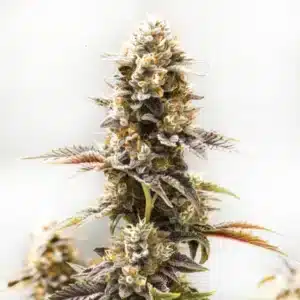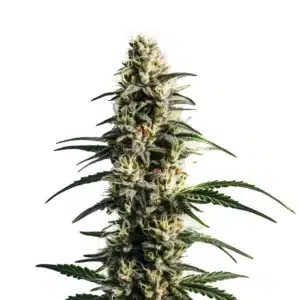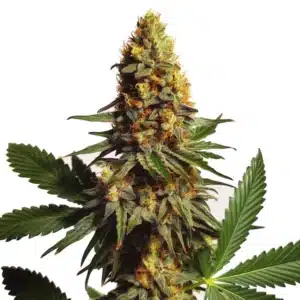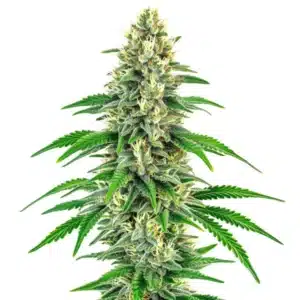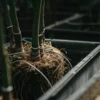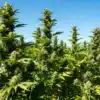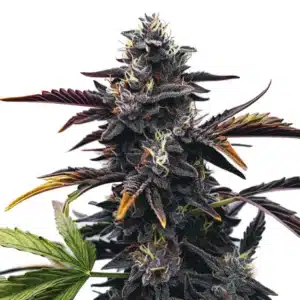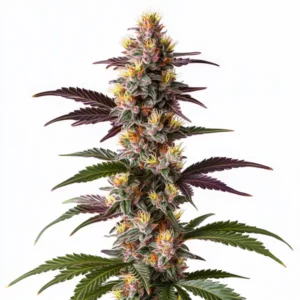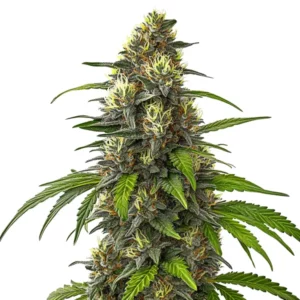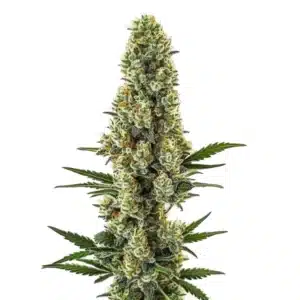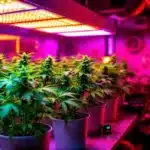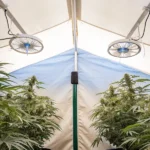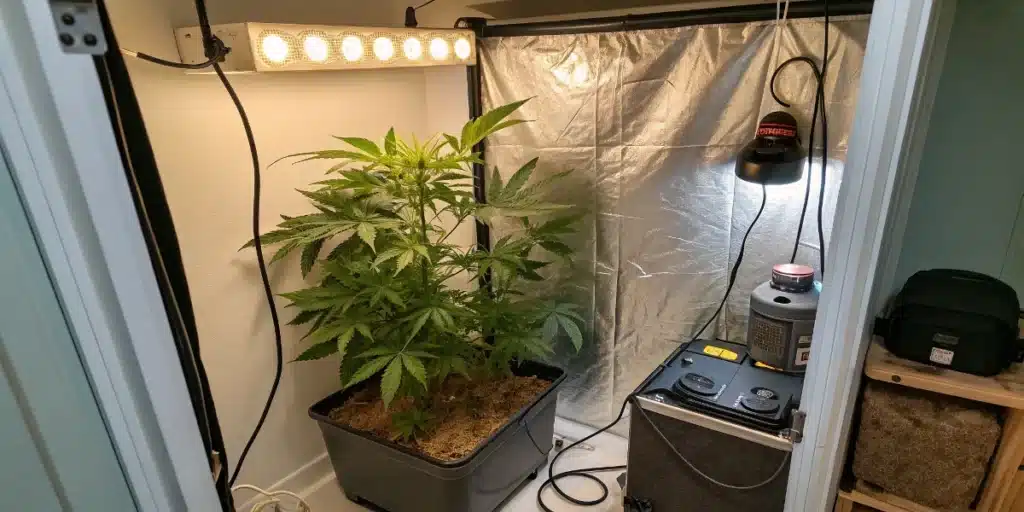
Designing the Perfect Indoor Grow Room
Planning Your Space
Layout and Design
Creating an indoor grow room is akin to sculpting a masterpiece; it requires careful planning and a dash of creativity. First things first, think about the layout of your space. Whether you’re working with a spare bedroom, a closet, or a dedicated grow tent, the design should cater to the needs of your plants while maximizing your available area. A well-thought-out layout can make the difference between a thriving garden and a chaotic jungle.
Before you even measure, consider the logistics. A vital and often overlooked factor is having a convenient water source. You will be using water daily, and it is essential for the water source to be close to your setup to avoid the constant hassle of transporting it.
Recommended Strains
Mendocino Purple Kush
|
|
THC | 16% - 23% (Medium) |
|
|
Type | Feminized |
|
|
Yield | Medium |
|
|
Phenotype | 60% Indica / 40% Sativa |
Koji
|
|
THC | 22% - 24% (Medium) |
|
|
Type | Feminized |
|
|
Yield | Medium |
|
|
Phenotype | 60% Indica / 40% Sativa |
Start by measuring your space accurately. Knowing the dimensions will help you select the right size of equipment and ensure that your indoor weed grow setup is both functional and efficient. When measuring, pay attention to the vertical space. A minimum height of 2 meters (about 6.5 feet) is recommended to accommodate the plants as they grow, as well as the lights and ventilation equipment above them. Remember, plants need room to breathe, so don’t overcrowd them.
Crucially, your chosen space must be completely light-proof. Before you begin setting up, test the space for light leaks. During the flowering stage, your plants require total darkness during their ‘night’ period. Even a small crack of light can cause stress and disrupt their cycle, so ensuring 100% darkness is a vital preliminary check.
Next, think about the flow of your indoor grow room. You’ll want to position your plants in a way that allows easy access for maintenance tasks like watering, pruning, and harvesting. Establishing clear paths will save you time and hassle in the long run. An organized layout not only makes your life easier but also promotes better air circulation and light penetration, essential for healthy plant growth.
Equipment Placement
Now that you have a rough idea of your layout, it’s time to consider equipment placement in your indoor grow room. The right positioning of your tools and gadgets can enhance your grow operation significantly. Start with your lights; they should be positioned to provide even coverage across all plants. Hanging lights from adjustable fixtures allows you to modify their height as your plants grow.
Next, think about your ventilation system. Proper air circulation is vital for preventing mold and ensuring your plants receive adequate fresh air. Place fans strategically to promote airflow, and remember to position your exhaust system to effectively remove stale air from the grow room. Don’t forget to also consider the placement of your humidity and temperature sensors to keep track of environmental conditions easily.
Finally, organize your water supply and nutrient delivery systems. Whether you’re using a drip irrigation system or hand-watering, it’s essential to have easy access to water sources. Keeping your equipment organized will streamline your daily tasks and help you monitor your indoor weed grow setup more effectively.
Promos & Deals
Environmental Controls
Lighting and Ventilation
Lighting is a cornerstone of any successful indoor grow room. Understanding the different types of grow lights available is crucial for optimizing your plants’ growth. LED lights, for instance, are energy-efficient and emit less heat compared to traditional HPS lights, making them a popular choice for indoor growers. Choose lights with a spectrum that mimics natural sunlight to ensure your plants receive the right wavelengths for photosynthesis.
Ventilation is equally important. It’s essential to understand that ventilation involves two separate systems that work together: air exchange and air circulation. Air circulation is the movement of air inside the room, typically handled by oscillating fans to strengthen stems and prevent stagnant air. Air exchange, however, is the process of removing old, stale air and bringing in fresh air, which requires dedicated intake and exhaust ports.
Installing an exhaust fan along with intake vents creates a cycle of fresh air. For effective air exchange, you need at least two openings and a powerful extractor fan for the outlet; a good rule of thumb is for your exhaust capacity to be double your intake capacity to create negative pressure. This setup not only helps regulate temperature but also provides your plants with the carbon dioxide they need to breathe and grow optimally.
This is also where odor reduction becomes critical. The smell from an indoor grow can be incredibly strong and travel hundreds of meters. To manage this, your exhaust system must run through a carbon filter or an ozonizer to neutralize odors before they exit the space. Remember that odor tends to travel upwards, so be especially mindful if you have neighbors living above you.
Temperature Management
Temperature management is another critical aspect of your indoor grow room. Plants thrive within specific temperature ranges, and fluctuations can stress them. Generally, daytime temperatures should hover around 75-85°F (24-29°C) during the light cycle, while nighttime temperatures can dip to around 65-70°F (18-21°C). Investing in a good quality thermometer and hygrometer will help you monitor these conditions accurately.
Using fans and air conditioning units can help maintain these temperatures, but be mindful of humidity levels as well. High temperatures combined with high humidity can create a breeding ground for mold, while low humidity can lead to nutrient deficiencies. Aim for a relative humidity of around 40-60% for optimal growth.
Implementing a climate control system can take your indoor weed grow setup to the next level. Automated systems can adjust fans and heaters based on real-time data, ensuring your plants remain in their ideal environment. It’s like having a personal assistant dedicated to your plants’ comfort!
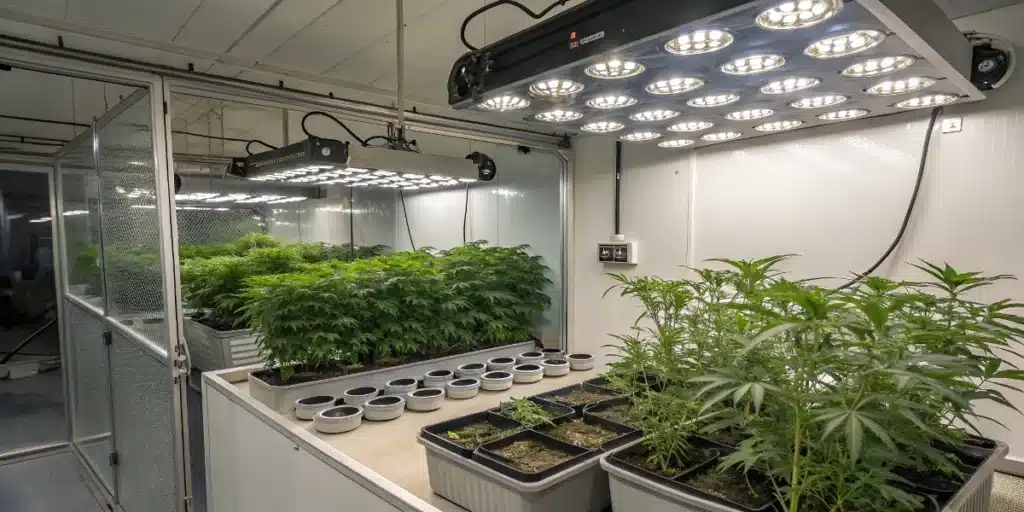
Indoor Weed Grow Setup for Beginners
Starting your first indoor weed grow setup is exciting, but it can also feel like stepping into a jungle of gear, techniques, and plant science. Don’t stress everyone starts somewhere, and with the right approach, even a beginner can grow top-shelf buds at home.
The beauty of an indoor grow room is control. You get to fine-tune every element light, air, nutrients, and water. But with that control comes responsibility. The first step is choosing your grow space. A closet, spare room, or grow tent can all work perfectly depending on your situation.
Next, invest in essential gear: a good-quality light (LEDs are great for beginners), a small fan, a timer, a thermometer/hygrometer combo, and basic containers with quality soil. Don’t overcomplicate things. Start with a couple of plants and scale up as you gain confidence.
One of the best beginner-friendly practices is keeping a grow journal. Write down your light cycles, feeding schedule, temperature readings, and how your plants look day to day. This helps you learn faster and troubleshoot problems before they spiral.
Also, resist the urge to overfeed or overwater. Cannabis plants are surprisingly resilient, and many new growers kill their plants with too much love. Less is often more in an indoor grow room.
Finally, remember: mistakes will happen, and that’s okay. Growing is a journey. As long as you stay curious and consistent, your first harvest can be something truly special.
Starting Small: Closet Grows and Micro Setups
Don’t let limited space hold you back. A killer indoor weed grow setup can thrive even in the smallest of areas closets, cabinets, or even modified furniture units. These micro grows are discreet, budget-friendly, and perfect for beginners or those living in apartments.
Start by choosing a space that you can seal off from light and control temperature. A closet works great because it usually has a door, ventilation potential, and can be easily modified with reflective materials like Mylar.
For lighting, go with compact LED panels or small CFLs that don’t overheat. You don’t need industrial lights for a single plant or two. Install a timer so your plants get a consistent 18/6 or 12/12 light schedule depending on their growth stage.
Ventilation is key, even in micro setups. A small clip-on fan and passive intake vents can do wonders for airflow and temperature regulation. You may not need a full exhaust system, but always aim for fresh air exchange to avoid mold and pests.
Choose compact strains like autoflowers or indicas that stay short and bushy. These are ideal for limited vertical space and generally easier to manage.
With the right strategy, a small indoor grow room can yield more than you’d expect. It’s not about how much space you have it’s how well you use it.
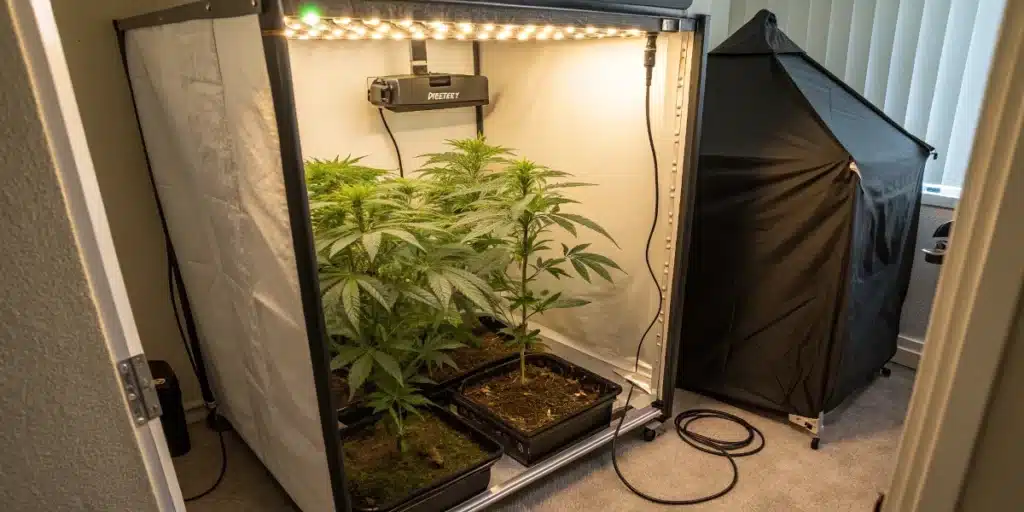
Common Mistakes When Building an Indoor Grow Room
Even the most motivated growers can stumble when setting up their first indoor grow room. Fortunately, most mistakes are avoidable if you know what to watch for. Here are the most common pitfalls and how to sidestep them.
1. Overcomplicatmendocinoing the setup
Many first-time growers go all-in with complex hydroponic systems, fancy gadgets, and expensive upgrades. Keep it simple. A solid indoor weed grow setup can be basic and still produce excellent results. Focus on mastering the fundamentals first.
2. Poor ventilation planning
Without proper airflow, your indoor grow room becomes a hot, humid box that invites mold, pests, and weak plants. Always plan for intake and exhaust fans, even in smaller tents. Air movement is non-negotiable.
3. Incorrect lighting distance
Placing lights too close or too far from your canopy can lead to light burn or stretching. Follow manufacturer guidelines and adjust as your plants grow.
4. Ignoring temperature and humidity
Extreme temps and poor humidity control can stunt growth or attract unwanted problems. A basic thermometer/hygrometer combo is cheap and absolutely necessary.
5. Overwatering and nutrient burn
Less is more, especially with nutrients. New growers often assume more food equals more buds. Not true. Start light, monitor plant response, and adjust slowly.
By staying mindful of these common errors, you’ll set up your indoor weed grow setup for success from the very beginning. Think of each mistake avoided as one step closer to your dream harvest.
Optimization Strategies
Maximizing Yield
Maximizing yield is the ultimate goal for many indoor growers, and there are several strategies to achieve this. One effective method is to employ training techniques, such as topping or low-stress training (LST). These methods encourage your plants to grow bushier rather than taller, allowing for more bud sites and ultimately increasing your harvest.
In addition to training, consider the use of high-quality nutrients tailored for the specific growth stage of your plants. Different stages require different nutrient profiles, and providing the right nutrients at the right time can significantly boost yields. Regularly check the pH and EC levels of your nutrient solution to ensure optimal absorption.
Lastly, don’t overlook the importance of timing. Harvesting at the right moment can mean the difference between a mediocre yield and a bountiful one. Monitor the trichomes on your buds closely; when they turn milky with some amber, it’s typically the perfect time to harvest. Patience is key, and waiting for the right moment can reward you with a more potent product.
FAQS
What are the best lights for an indoor grow room?
The best lights depend on your specific needs, but many indoor growers opt for LED lights due to their energy efficiency and low heat output. HPS lights are also popular for their intense light output but can generate more heat, necessitating better ventilation.
How often should I water my plants in an indoor grow room?
Watering frequency varies based on plant size, strain, and environmental conditions. A good rule of thumb is to check the top inch of soil; if it feels dry, it’s time to water. Always ensure proper drainage to avoid overwatering.
Can I use regular potting soil for my indoor weed grow setup?
While regular potting soil can work, it’s often beneficial to use a soil mix specifically formulated for cannabis. These mixes typically provide better drainage and nutrient availability, helping your plants thrive.



